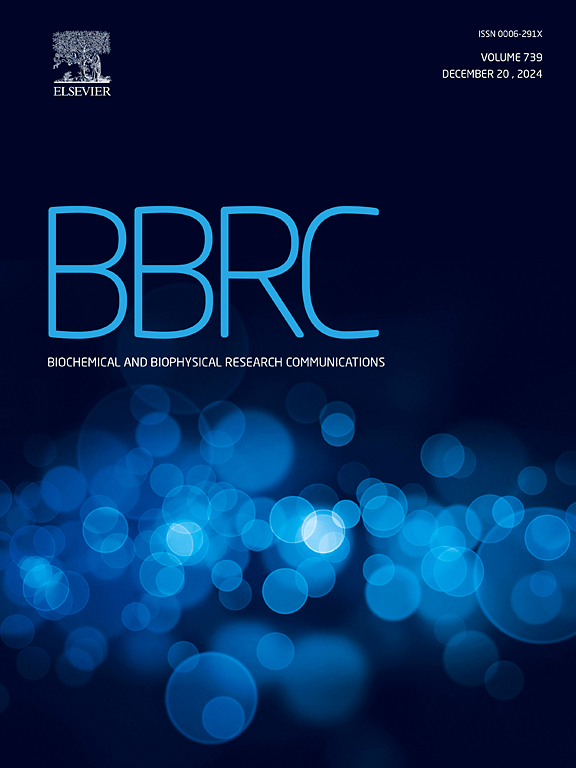Fbxl3缺失通过上调肌原素减轻mdx小鼠的肌病
IF 2.2
3区 生物学
Q3 BIOCHEMISTRY & MOLECULAR BIOLOGY
Biochemical and biophysical research communications
Pub Date : 2025-06-17
DOI:10.1016/j.bbrc.2025.152220
引用次数: 0
摘要
杜氏肌营养不良症(DMD)是一种严重的x连锁神经肌肉疾病,治疗方案有限,迫切需要新的治疗策略。在本研究中,我们研究了FBXL3在DMD发病机制中的作用,并评估了其作为基因治疗靶点的潜力。使用mdx小鼠(一种完善的DMD临床前模型),我们发现卫星细胞特异性缺失FBXL3显著改善肌肉病理和功能表现。缺乏fbxl3的mdx小鼠表现出增加的身体和肌肉质量,以及增强的握力和耐力。组织学分析表明,中央有核纤维的数量和横截面积都显著增加,表明再生活性增强。这些变化与肌原素表达升高、炎症和纤维化减少有关,表明FBXL3是肌肉修复的负调节因子。此外,通过腺相关病毒(AAV)递送到腓肠肌靶向FBXL3沉默导致肌肉质量增加和肌原素进一步上调,支持其治疗相关性。总之,这些发现确定了FBXL3是通过抑制肌生成素来调节肌肉再生的关键因子,并为其作为一种有前途的DMD基因治疗策略提供了令人信服的证据。本文章由计算机程序翻译,如有差异,请以英文原文为准。

Fbxl3 deletion mitigates myopathy in mdx mice through upregulation of myogenin
Duchenne muscular dystrophy (DMD) is a severe X-linked neuromuscular disorder with limited therapeutic options, highlighting the urgent need for novel treatment strategies. In this study, we investigated the role of FBXL3 in DMD pathogenesis and assessed its potential as a gene therapy target. Using mdx mice, a well-established preclinical model of DMD, we found that satellite cell-specific deletion of FBXL3 significantly improved muscle pathology and functional performance. FBXL3-deficient mdx mice exhibited increased body and muscle mass, along with enhanced grip strength and endurance capacity. Histological analyses demonstrated a marked increase in both the number and cross-sectional area of centrally nucleated fibers, indicative of enhanced regenerative activity. These changes were associated with elevated myogenin expression and reduced inflammation and fibrosis, suggesting that FBXL3 functions as a negative regulator of muscle repair. Moreover, targeted FBXL3 silencing via adeno-associated virus (AAV) delivery to the gastrocnemius muscle resulted in increased muscle mass and further upregulation of myogenin, supporting its therapeutic relevance. Together, these findings identify FBXL3 as a key modulator of muscle regeneration via repression of myogenin and provide compelling evidence for its inhibition as a promising gene therapy strategy in DMD.
求助全文
通过发布文献求助,成功后即可免费获取论文全文。
去求助
来源期刊
CiteScore
6.10
自引率
0.00%
发文量
1400
审稿时长
14 days
期刊介绍:
Biochemical and Biophysical Research Communications is the premier international journal devoted to the very rapid dissemination of timely and significant experimental results in diverse fields of biological research. The development of the "Breakthroughs and Views" section brings the minireview format to the journal, and issues often contain collections of special interest manuscripts. BBRC is published weekly (52 issues/year).Research Areas now include: Biochemistry; biophysics; cell biology; developmental biology; immunology
; molecular biology; neurobiology; plant biology and proteomics

 求助内容:
求助内容: 应助结果提醒方式:
应助结果提醒方式:


